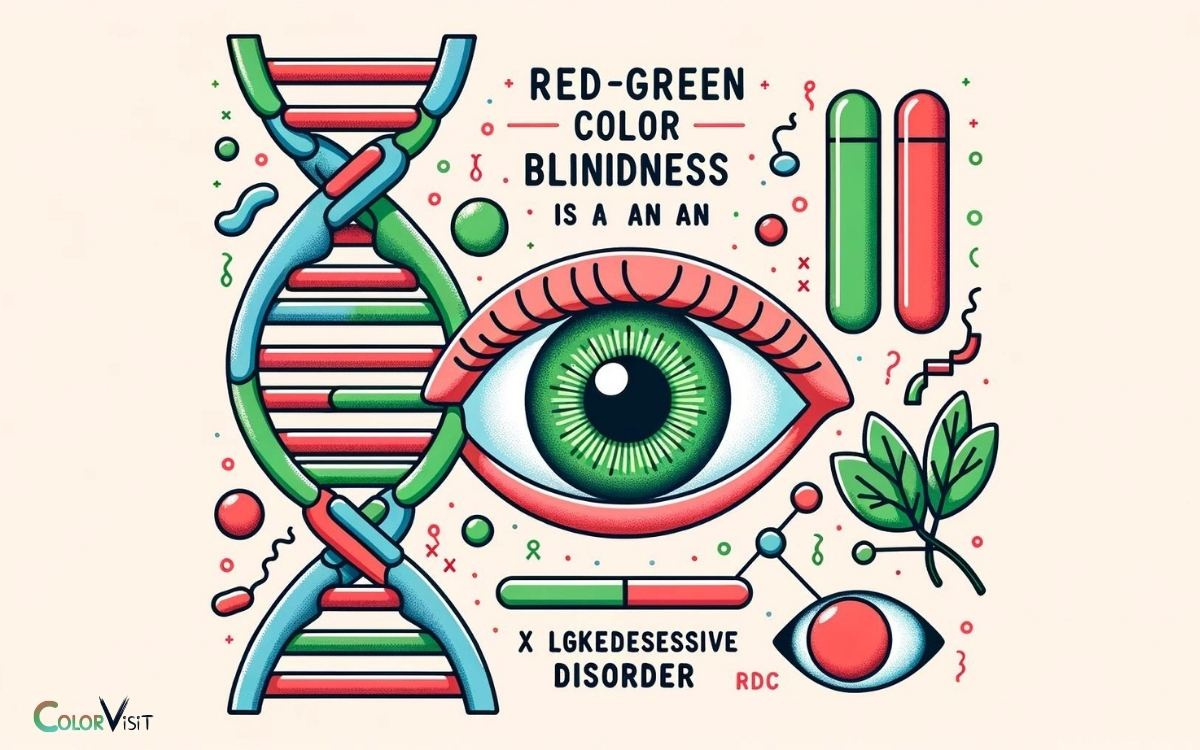Red Green Color Blindness Is an X Linked Recessive Disorder!
Red-green color blindness is a genetic condition caused by an X-linked recessive gene.
Red-green color blindness occurs when the photopigments in the cones of the retina, responsible for color vision, are absent or not functioning correctly.
Since it is an X-linked recessive trait, males have a higher chance of being affected because they have only one X chromosome.
A male with the defective gene on his X chromosome will have the condition. Females have two X chromosomes, so a defective gene would need to be on both for them to exhibit the condition.
Understanding red-green color blindness is crucial for early identification and adaptation to the condition.
Key Takeaway
Understanding X-Linked Recessive Inheritance
Understanding X-linked recessive inheritance involves tracing the transmission of the affected gene through the X chromosome from carrier mothers to sons.
- In this type of inheritance, the gene responsible for the trait or condition is located on the X chromosome.
- As males have only one X chromosome, they are more likely to express X-linked recessive disorders if they inherit the affected gene.
- Carrier mothers, who have one affected X chromosome and one normal X chromosome, can pass the affected X chromosome to their sons.
- Daughters of carrier mothers have a 50% chance of being carriers themselves. This mode of inheritance has implications for genetic counseling and family planning.
Understanding X-linked recessive inheritance is crucial for individuals and families affected by X-linked disorders, empowering them to make informed decisions regarding their health and future generations.
Genetic Basis of Red-Green Color Blindness
Red-green color blindness is caused by a genetic mutation affecting the perception of red and green hues.
This condition is primarily linked to the X chromosome and is inherited in an X-linked recessive pattern.
The genetic basis of red-green color blindness can be attributed to several factors, including:
- Gene Mutations: Mutations in the OPN1LW and OPN1MW genes, which encode the red and green cone photopigments, lead to the most common forms of red-green color blindness.
- X-Linked Inheritance: The genes responsible for red-green color vision deficiency are located on the X chromosome, making it more prevalent in males.
- Lack of Photoreceptor Sensitivity: Individuals with red-green color blindness have photoreceptor cells that are less sensitive to either red or green light, resulting in difficulty differentiating between the two colors.
- Genetic Testing: Advances in genetic testing have enabled the identification of specific gene mutations associated with red-green color blindness, allowing for more accurate diagnosis and potential gene therapy interventions.
Impact on Color Perception
The genetic mutation causing red-green color blindness results in an altered perception of color, impacting individuals’ ability to distinguish between red and green hues.
- This impairment can affect various aspects of daily life, including difficulties in interpreting traffic lights, maps, and colorful displays.
- Furthermore, individuals with red-green color blindness may encounter challenges in certain professions, such as graphic design, electrical wiring, and transportation, where the accurate perception of color is crucial.
- Additionally, this condition may lead to emotional and psychological effects, as it can affect the way individuals perceive the world around them.
Understanding the impact of red-green color blindness on color perception is essential for creating inclusive environments and developing technology and tools to assist those affected by this condition.
Diagnosis and Management
Individuals with red-green color blindness should undergo comprehensive diagnostic testing and receive personalized management strategies to mitigate the impact of this condition on their daily lives.
To effectively diagnose and manage red-green color blindness, individuals should consider the following:
- Genetic testing to confirm the specific type of color vision deficiency.
- Regular eye examinations to monitor any changes in vision and receive appropriate interventions.
- Utilization of color vision tests to assess the extent of color deficiency and tailor management strategies accordingly.
- Seeking professional advice from optometrists, ophthalmologists, or genetic counselors to explore available management options and support resources.
Understanding the diagnostic and management options available is crucial for individuals with red-green color blindness to navigate their daily activities effectively.
This leads us into the subsequent section about ‘support and resources’.
Support and Resources
There are various support systems and resources available to help individuals with red-green color blindness lead fulfilling lives.
- Support groups and online communities provide a platform for individuals to connect, share experiences, and gain valuable insights on coping strategies.
- Additionally, educational resources, such as color-correcting glasses and mobile apps, can assist individuals in distinguishing between colors and navigating daily tasks.
- Employers and educational institutions can also offer accommodations, such as providing color-coded materials in alternative formats.
- Furthermore, seeking guidance from healthcare professionals, such as optometrists or genetic counselors, can offer personalized support and information about available treatments or interventions.
Conclusion
The genetic basis of red-green color blindness as an X-linked recessive trait has a significant impact on color perception. Understanding the inheritance pattern and its implications is crucial for diagnosis and management.
Support and resources are available for individuals and families affected by this condition.
Like a painter working with a limited palette, it is important to recognize and appreciate the unique way in which individuals with red-green color blindness perceive the world around them.

